Submitted by Antonello Magliozzi
Marco Mari on "the Italian green deal between circular design and cultural heritage"
Italy Architecture News - May 28, 2021 - 21:05 3711 views
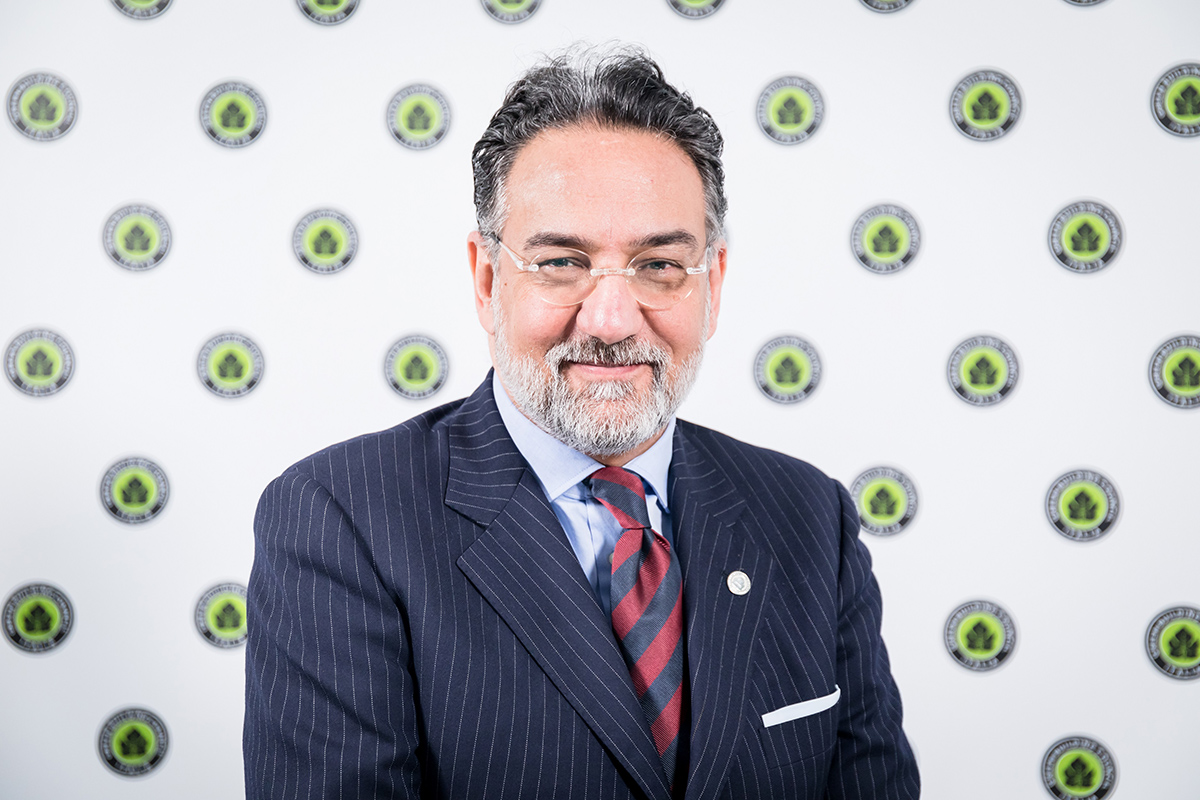
"Since sustainability represents a system of complex relationships, so-called green strategies always require a decision-making process based on the centrality of the project. These indeed require a multidimensional approach, never one-dimensional, such as to effectively articulate the value chains around a holistic, measurable and specific goal, that one otherwise defined with the word sustainable." With these words Marco Mari, current president of the Green Building Council Italy, in an exclusive interview stigmatizes a vision that inextricably combines cultural processes with those of sustainability. This according to an international "wonderfully Anglo-Saxon approach”, but with a regional or local connotation, the Italian one, which has polycentric identities and lifestyles that indeed balance the relationships between man and environment. An idea according to which the scientific management approach constitutes a system to guarantee the measurement of the overall balance, while the pre-existing heritage represents a fundamental direction for "ante litteram" innovations of the future. An all-Italian "modus operandi" that combines heritage and sustainability in a synchronous and asynchronous way.
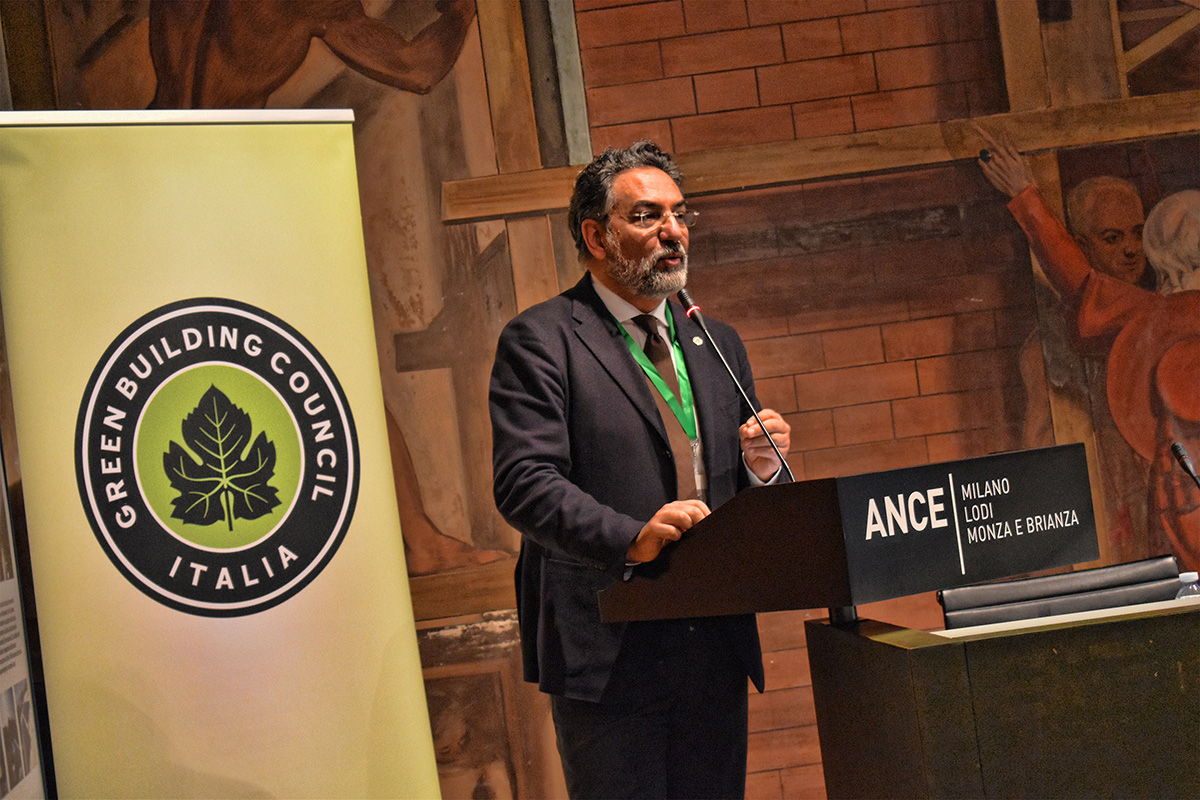
Marco Mari president of the Green Building Council Italy. Image © GBCItalia
How did Marco Mari arrive at his current idea of sustainability that combines the global with the local? Marco tells us that he has always had clear ideas about where to go, and that he started with the idea of applying the circular economy to construction and then continued to do so, thanks also to the 10 years’ experience spent in GBC Italia. He's always felt the need to measure things and, because of that, about 15 years ago he started to get involved with the topic of waste traceability. Similarly to what has already been done in the food sector, Marco imagined tracing the path of waste in the construction chain and thus structured a third-party verification process to certify the correctness of the governance of operations for the ceramic industry. A process that has since become a standard for other product categories as well. He thus began to dialogue first with the man who founded GBC Italia, Marco Zoccatelli, whom he called "my great teacher!", and then began his institutional work at the Institute. He then actively collaborated with the Italian Green Building community to apply and develop the principles of the Next Generation Europe in order to produce value for the next generations, and today he has finally been appointed to lead GBC Italia on 2021.
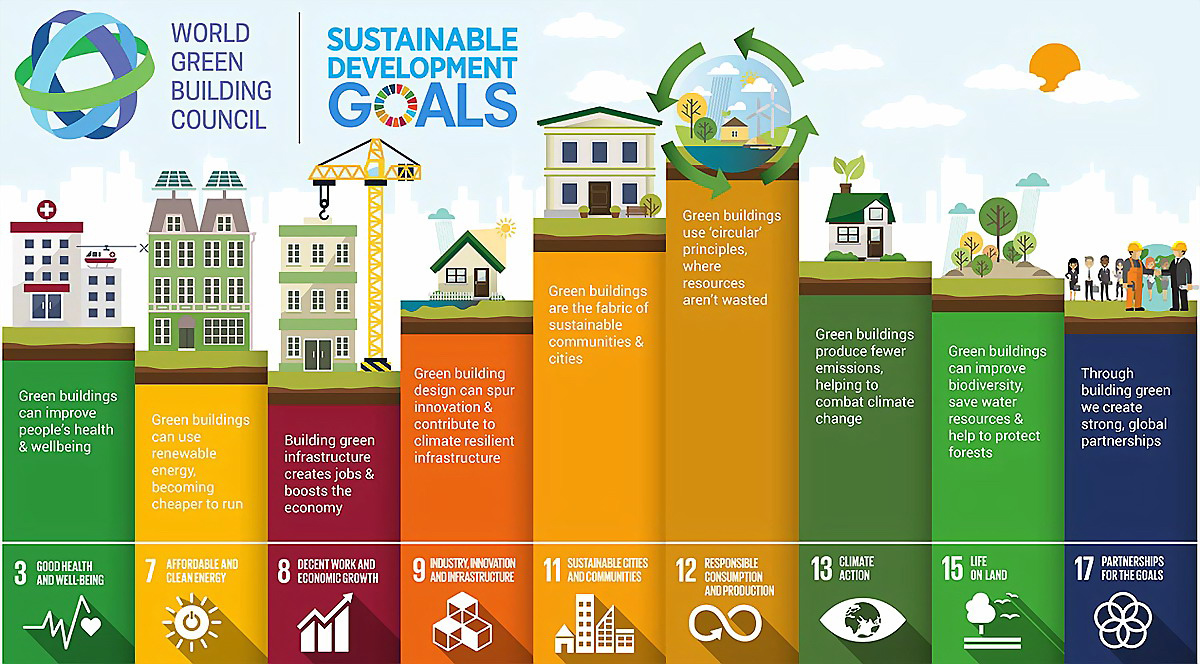
Green Building and the Sustainable Development Goals. Image © Worldgbc.org
Marco Mari was recently included by the Ministry of the Environment in the group of 8 experts of the G20 Environment, and was also appointed by the Italian Council of Ministers in the role of supporting the commissioner for post-earthquake reconstruction. Appointments that allowed him to "push the issue of Heritage & Sustainability as an authentic vision", both locally and globally, and to accelerate the promotion of all rating systems, without distinction of affiliation, with a logic according to which: "what is important is to do!. "An approach aimed at achieving a mandatory near zero, at significantly reducing CO2 emissions as well as water consumption, but which is also aimed at promoting people's health, the healthiness of environments together with environmental psychological well-being. A method that, as underlined by Marco, determines the need to consider the historical value of the Italian heritage both for its strong "connotation of place", and also "for the intrinsic environmental-and-energy value of the same".
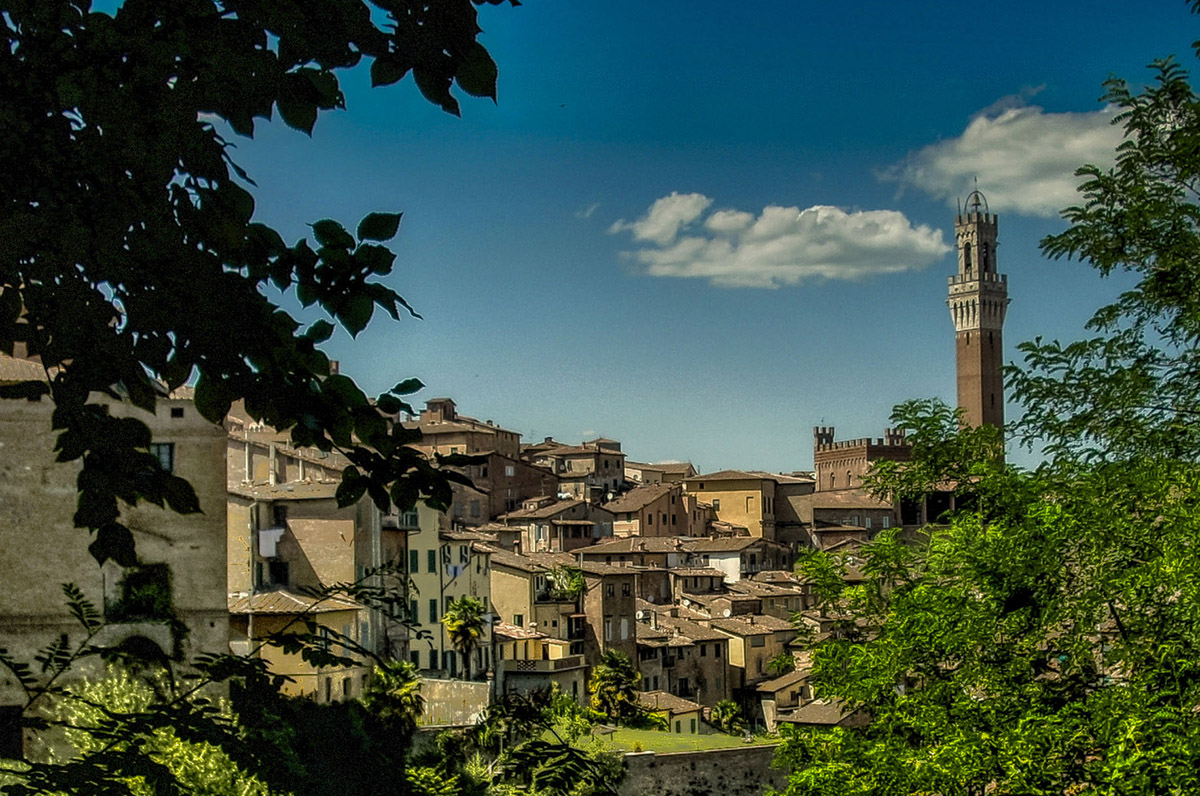
The example of the Italian heritage of historic cities and Tuscan landscapes. Image © GBCItalia
All this because according to Marco Mari "many Italian buildings, if recovered and made more durable, can have better impacts on the carbon footprint and global emissions than those deriving from modern buildings". This is because "the comfort and quality of light typical of our historic buildings are in themselves a resource not to be wasted”. Also, because "in every Italian city, as well as in Europe and all over the world, the ancient walls become a building, and then something else in that beauty of unpredictability" which is typical of our "cultural roots". And again because, for instance, "Venice is the city in the world with the largest number of water recovery tanks: it naturally recovers and purifies all rainwater to reuse it!"; and finally because "all the many villages in Italy can be crossed on foot in 15 minutes, they have a mix of very different functions and economies, and are indeed an incomparable example". This is why he states that “Italy has finally introduced the pieces that were missing: first of all GBC Historic Building. Then GBC Home for small residential and small hotels, GBC Quartieri (from LEED for neighborhood) and GBC Condomini with a view to intervention and maintenance that anticipates the latest Italian laws on Ecobonus and, last but not least, all the LEED’s family protocols".
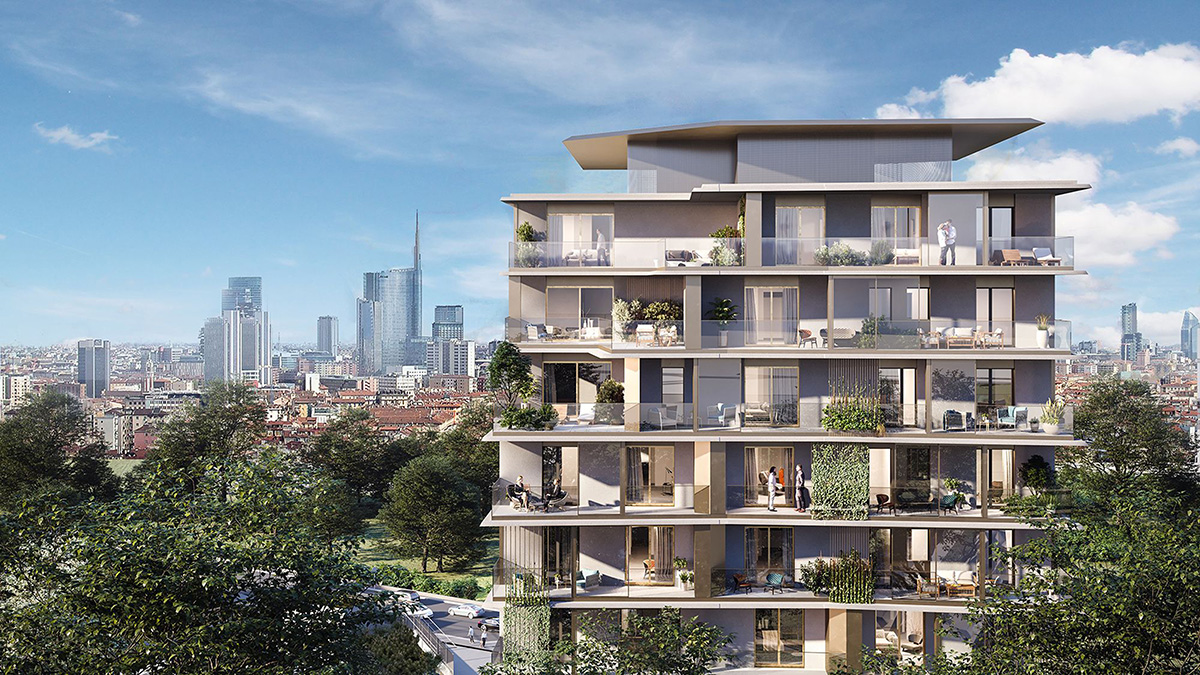
The first Italian smart district competing for GBC Quartieri certification . Image © GBCItalia
And so Marco explains how the Italian Green Building Council community has asked to be a partner of USGBC to incorporate a new protocol on Italian-led sustainable building into its ecosystem of rating systems: the GBC Italia Historic Building. A protocol that adds 19 points to the LEED rating system and thus unbalances it towards the concept of Italian restoration, which is based on the strong prior knowledge of the building. A way of working that introduces "a simple principle according to which: if you don't know the building well, you break it!" This is why the new GBC protocol is now also launching new pilot credits both on durability and resilience, or through "the assessment and promotion of the lower seismic risk of buildings", and on the "enhancement of recycled material from DOCG rubble, like wine, with a short supply chain. "All within a virtuous recovery process that protects the historical value of the buildings in compliance with the necessary constraints imposed by the authorities and that, at the same time, improves energy performance and impacts on the environment. A topic that in its complexity "will be treated by GBC Italia at the next International Restoration Exhibition" to underline the value of heritage with respect to the objectives of sustainability and the circular economy. This also "to inspire the Italian green deal with the example of its heritage: not following the model of mega structures or mega cities, but the model of widespread micro-poles."
USGBC President Mahesh Ramanujam talks about the achievements of GBC Italia and its innovative certification protocol for historic buildings. Image © GBCItalia via Youtube
A best practice offered by Italian history and that can be recounted with many case studies of application of the GBC HB protocol such as that of the restoration of Palazzo Gulinelli in Ferrara or that of Palazzo Poli in Rome (the building of the Trevi Fountain), as well as with the example of the first building certified according to the new protocol abroad: in Havana. Speaking of the Cuban project, Marco Mari states how it "showed an international interest in the Italian restoration method" and how, at the same time, "it allowed the Italian community to discover that Cuba was actually the God of the circular economy". A model that in fact resembles the same socio-economic structure of the Italian historical tradition, that is made of nano-structures or micro-communities, and therefore reminds us "how many small municipalities make the best contribution to the goals of the circular economy." A system of relationships that unites the single artifact to the territory in a choral stratification that goes from the level of the building, to the level of the neighborhood, to the level of the city and so on, and thus balances cultural roots and socio-economic needs.
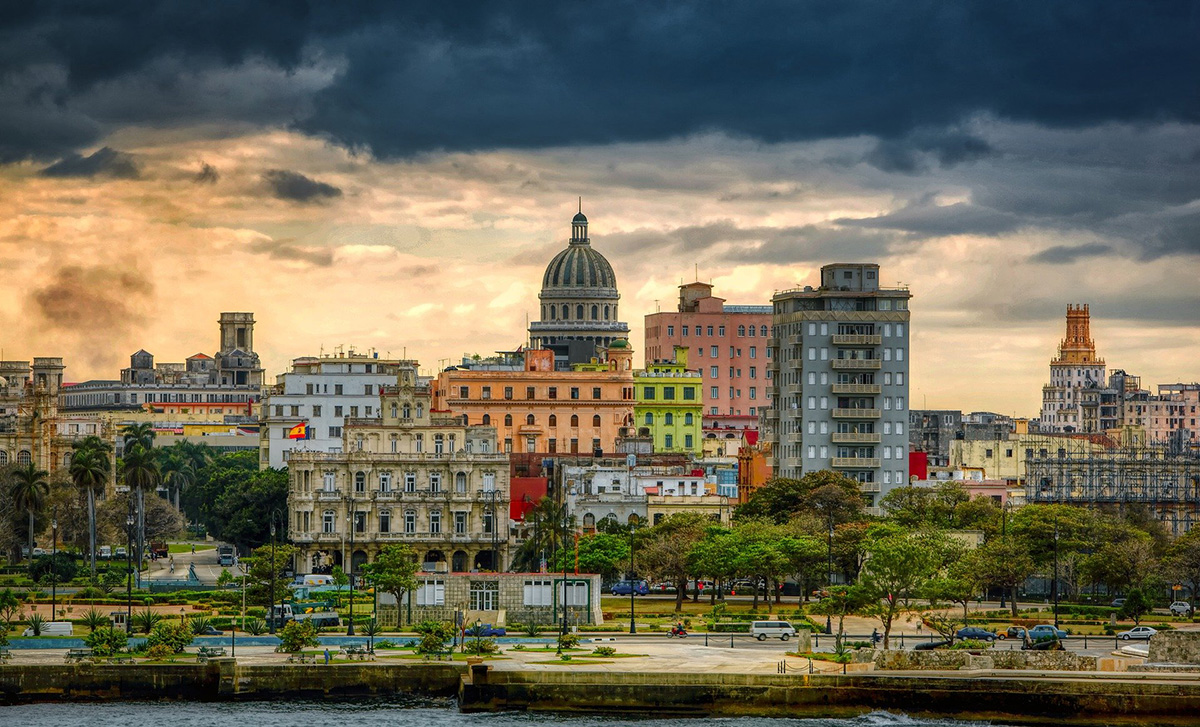
View of Havana, capital of the circular economy according to the experience of GBC Italia. Image © pixabay
Marco Mari then recalls how Italy also has a set of mandatory environmental regulations that are greater than those of any other country in the world. Italy also has a fair amount of professional maturity, which is measured in the higher percentage of LEED Platinum certified buildings in the individual country. However, it is also important to say that Italy has a problem in reporting: in leading and managing buildings. And this is why today the Italian panorama highlights the need for a cultural change "more in those who manage than in those who design". A need that will be able to find an application aid thanks to the introduction of new European reporting systems such as Taxonomy, which, however, as Marco points out, must never be managed solely with financial criteria, and in any case without ever forgetting that " green strategies always require the centrality of the project "together with "a multidimensional management approach". A requirement that must be achieved not only with the correct triggering of extraordinary plans such as the recent National Recovery and Resilience Plan, but also with the correct management of the entire life cycle of the new interventions.
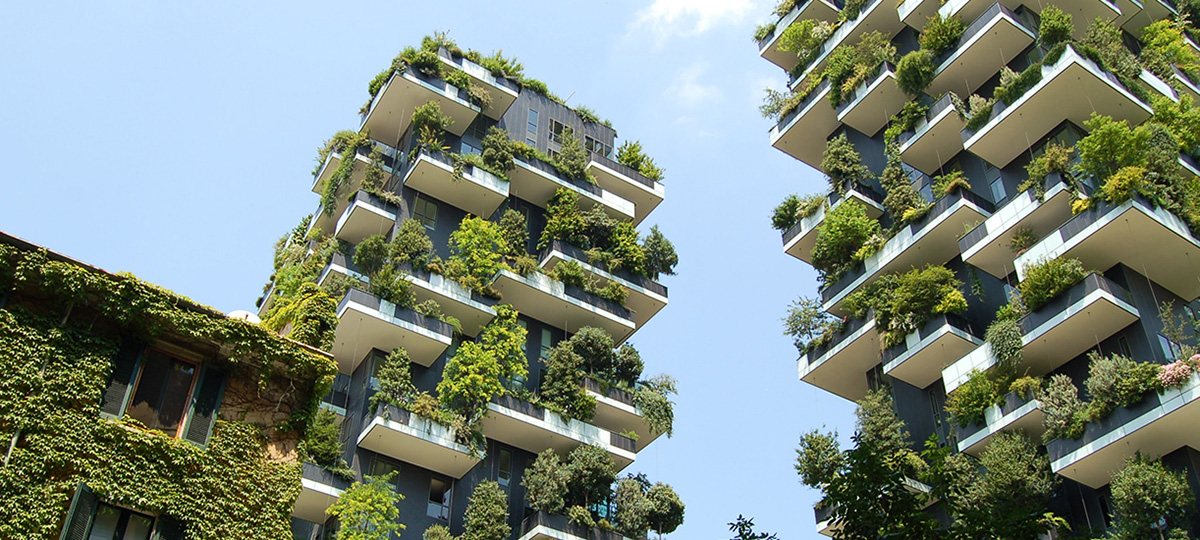
Vertical Forest, LEED Gold certified. Image © GBCItalia
But how to cope with an ever-changing regulatory landscape, with so many items and criteria, with so many needs ranging from projects to reporting? “Strong intellectual clarity will be required! Cultural heritage should never be neglected as an approach. As Dario Fo used to say: "culture is not a useless burden!". And then the "value chains will have to be reconnected" by focusing the project on the social, financial and sustainable objectives of a georeferenced context. An objective that can be achieved with the help of new digital tools such as Ongreening, in order to narrate, inspire and make the application of sustainable building processes easier. But above all by applying the right speed and acceleration required by the European Renovation Wave: "because time is running out!"; "because it is more necessary than ever to double the retraining rate at the local level by 2030". A challenge that according to Marco Mari: "it is possible within regional or local cultural identities, through a circular planning, and with the reuse of the abundant and valuable resources of the pre-existing heritage".
Ongreening to accelerate the green building transition . Image © Ongreening via Youtube
Read the full transcript of our interview with Marco Mari below:
Antonello Magliozzi: Marco could you tell us how your passion for sustainability was born and developed to take you to where you are today?
Marco Mari: I could answer you succinctly by saying that I've always had a clear idea of where to go. I started with the circular economy and then continued with the circular economy. I have always felt the need to measure things. About 15 years ago, I started dealing with a topic that was very important to me: that of waste traceability. Similar to what was already being done in the "food" sector, I imagined tracing the path of waste in the construction industry. So I started working with a company that produced ceramic coatings to explore the issue of waste reuse in products. So I structured a third-party verification process to attest to the correctness of the governance of operations. This work was then extended to the entire ceramic industry with a view to responding to the need for sustainable building according to the circular economy approach. From there I began to dialogue with the man who founded GBC Italia in 2008, Mario Zoccatelli, my great teacher, and then I began my institutional activity at the organization. After the first three years I became vice-president and after various events in which I focused on "doing" I arrived at the current presidency.
Antonello Magliozzi: In addition to the role of the presidency of GBC Italy, you have recently had other positions. Marco could you tell us about it?
Marco Mari: Today, in addition to the presidency of GBC Italia, I have the honor of being included by the Ministry of the Environment in the group of 8 experts of the G20 Environment, and then of having been appointed by the Council of Ministers in the role of supporting the commissioner for post-earthquake. In these areas I pushed the theme of Heritage as an authentic vision. I don't think these are recognitions for me, but a great job done by a community. As Pope Francis says: nobody saves himself alone! My work and that of the community to which I belong has always been inspired by a single principle; that of “Next Generation Europe”: producing value for the next generations.
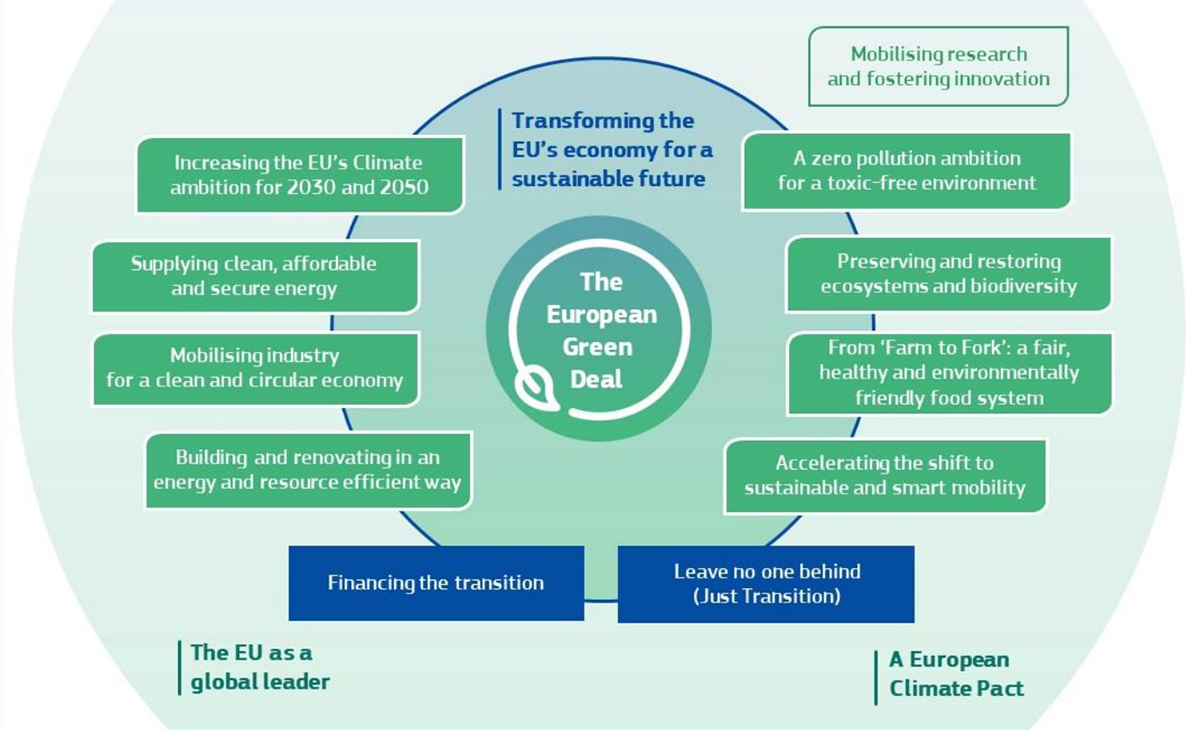
The European Green Deal. Image © European Commission
Antonello Magliozzi: There are many sustainability rating systems and protocols today. In your position you certainly refer specifically to the LEED protocol, but how do you relate to the entire field of organizations and entities working on sustainability?
Marco Mari: In addition to LEED, GBC Italy promotes all energy-environmental protocols: from BREEAM to WELL, and so on. Since time is running out, the important thing is to do! We are promoting all rating systems without distinction. With the European "renovation wave", the value of sustainability for both the environment and the economy has been sanctioned at EU level. These themes have been crystallized in version 2 of Level(s): the European building reporting system for the next European directive. To give you an example of our approach I can tell you that GBC Italy is the organization that has tested more Level(s). Our approach is certainly international, but with a strong regional and local connotation. That's why in the G20 table GBC Italy has also emphasized the theme of Heritage, according to a wonderfully Anglo-Saxon approach to sustainability.
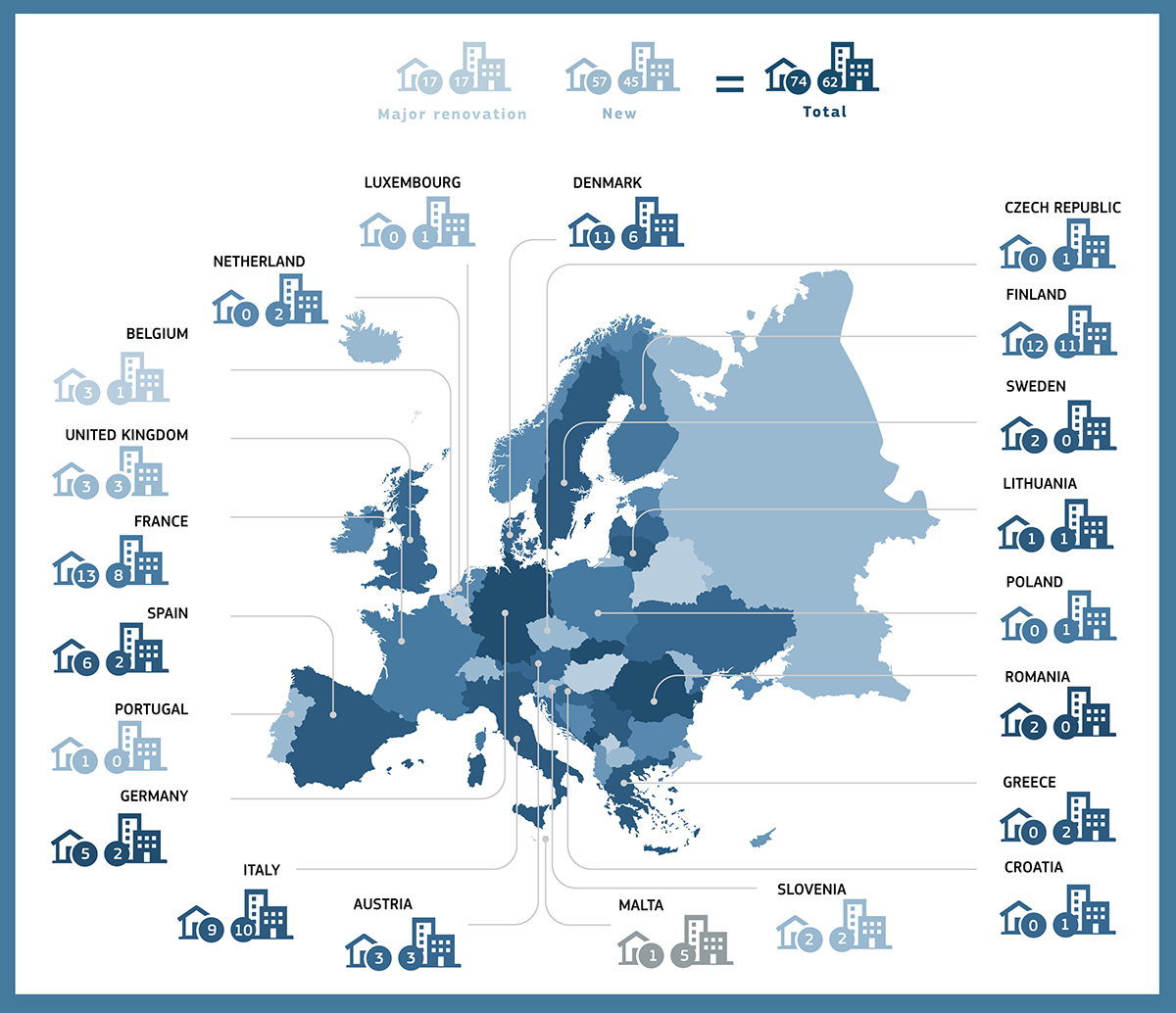
Level(s): The case studies of the European framework. Image © European Commission
Antonello Magliozzi: Speaking of scoring systems that measure investments (for example, as GRESB does), thinking of Italy made up of historic buildings but also of widespread heritage, how is it possible to extend the attention of investors to such an extensive heritage?
Marco Mari: In the HB protocol the first certified building was a farmhouse in Guarene! We have a culture of our countryside, of our rurality that has an extreme value. A value of the lifestyles that we export, a call for investments. The Guarene farm had no fine art or cultural heritage constraints. In fact, it was not only interesting for its architectural value, but for the combination of two aspects: that of heritage and sustainability. Protecting the values of widespread heritage and pre-existing natural resources in a short supply chain, which also reduces the impact of transport, actually creates value for those who invest.
With respect to the content of your question, however, I must tell you that today there is a great risk with the introduction of the taxonomy and other criteria for measuring sustainability levels. Everyone does it all! The risk is that finance deals with technical issues related to property valuation. The risk is that finance indicates what sustainable buildings should look like and how the wheel can be reinvented. This is why I would like to underline that since sustainability represents a system of complex relationships, the evaluations that measure the processes of green strategies always require the centrality of the project. In other words, a multidimensional approach, never one dimensional!
With a partial approach, perhaps we solve one problem, but we probably run the risk of creating many more. We all build photovoltaic fields to produce renewable energy, and then: where do we grow? It is clear that there is a need for balance. Draghi said: uncertainty and falling incomes are melting demand, supply suffers from falling orders, but most of all supply is based on disconnected value chains. What does an environmental energy protocol do? It tells you the characteristics of the materials for their impact not just during the process, but for the goal of their impact of the building at the end. The goal is always the lowest impact at the end. So such protocols articulate the value chains in order to the common goal. Investing according to such an approach means investing well because it produces much more. But a strong intellectual clarity will be ever required! Cultural heritage should never be neglected as an approach. As Dario Fo used to say: "culture is not a useless burden.” So can you decide to divide the medal in 2? It is not possible because on one side there is culture and on the other sustainability.

Venice cultural heritage . Image © GBCItalia
Antonello Magliozzi: How do you think the principle of articulation of value chains can be applied in our country?
Marco Mari: The Anglo-Saxon approach to energy-environmental sustainability is very powerful and pragmatic, but is strongly linked to a culture of renewal. If we made wonderful sparkling cities all in steel and glass, even if with sustainable buildings and materials, we would have generated another problem linked to the lack of a cultural root of the places. The "non-places" generate disease as deepened by studies of "environmental psychology". With this belief, the energy-environmental protocols have all come to address the reuse and enhancement of buildings. Thus, we in Italy realized that these international protocols had to be related to our reality. We therefore asked to be a partner of USGBC to incorporate in its ecosystem of rating systems a new protocol on sustainable Italian-led construction, the one relating to the existing historical heritage. This is due to the specificity of the historical value of the Italian heritage, but also for its intrinsic environmental energy value. Many Italian buildings, if recovered and made more durable, can have a better impact on the carbon footprint and global emissions than that derived from modern buildings. We started reading LEED with the archetypes we had. The comfort and quality of light typical of our historic buildings: go to the Pantheon! Go to any Italian city and see how the ancient walls become a building, and then something else in that beauty of unpredictability. Do we want to talk about water recovery? Venice is the city in the world with the most water recovery tanks. It naturally recovers and purifies all rainwater to reuse it. All the many villages in Italy can be covered in 15 minutes on foot and have a mix of unparalleled functions and economies. This is why LEED Italy has finally introduced the pieces that were missing: first of all GBC Heritage. Then GBC Home for small residential and small hotels, LEED Condominiums with a view to intervention and maintenance that anticipates the latest Italian laws on Ecobonus and, last but not least, LEED Quartieri for urban regeneration.
Antonello Magliozzi: Existing heritage is a large and complex subject. Can you summarize the main contents of the GBC Italy Historic Building protocol?
Marco Mari: GBC Italia Historic Building adds 19 points on the LEED rating and skews the protocol toward the Italian restoration concept, which is based on strong prior knowledge of the building. We introduced a simple principle: if you don't know the building well, you break it! I could tell you that it is a protocol in continuous evolution. These days we are launching the topic of pilot credits in relation to the areas of project innovation and regional priorities. The topics we are focused on are: durability and resilience. These in turn lead to a strong interest in another topic: the assessment and encouragement of lower seismic risk of buildings. And so, from the first international protocol to assign a score to the degree of seismic resilience (ed. GBC Condominiums), the main pilot credits of the protocol GBC Italy Historic Building were born. What better design innovation on seismic resilience? What better regional priority than local earthquake characteristics? And then just in these days I am trying to close an agreement with the Ministry of Environment and ISPRA to introduce another innovation credit to the design for the incentive of regional priorities: that of rubble. To date, rubble material is only made available. There's no concept of harvesting yet. And that's why the new pilot credit will be about leveraging recycled material from DOCG rubble, like wine, in short supply chains. The concept that will go through is that the building that includes recycled material has more value.
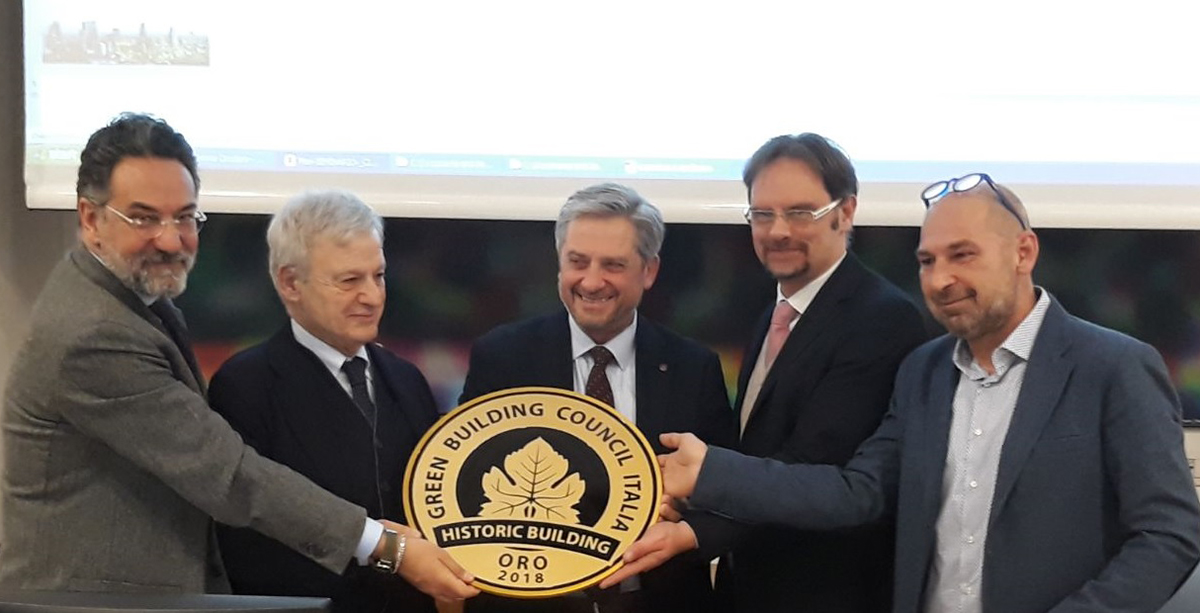
The stables of the Rocca di Sant'Apollinare, GBC Historic Building gold certified. Image © GBCItalia
Antonello Magliozzi: Can you give us some examples or case studies of the Italian GBC Historic Building method?
Marco Mari: The first international case study of the GBC Italia Historic Building protocol was done in Cuba in Havana. Funded by the Ministry of Foreign Affairs to promote Made in Italy: restoration. Cuba liked it very much and asked to be trained in the method. Then we discovered that actually the god of the circular economy is Cuba. A country that needs to reuse what it has. And this protocol has been used to innovate precisely in the circular economy.
There are also other GBC Historic Building certified case studies and projects in our country, such as the Palazzo Gulinelli in Ferrara. For this building, which had been damaged by the earthquake, the owners chose to pursue a virtuous process of recovery and consolidation that would not only protect as much as possible the historical value of the building in compliance with the necessary constraints imposed by the Superintendence, but that would also ensure the best energy performance and the lowest impact on the environment. He therefore chose GBC Historic Building.
I would like to point out that this topic will be treated in a central way at the next International Exhibition of Restoration. And at that event we will further launch the internationalization of the GBC HB protocol to export a piece of great culture that we have in Italy.
Antonello Magliozzi: The topic of historic buildings is certainly Italian in its conception and validity. It is measured against a history of architecture, building and landscape that has no equal in the world. But how does GBC address the issue of regeneration of compromised areas, brown files or infill locations or urban voids?
Marco Mari: Italy has 70% of its territory with municipalities of less than 5,000 inhabitants. We could say that Italy represents a model of distributed anthropization, i.e. made up of nano-structures or micro-communities. This is the result of a long history that has taught us how many small municipalities make the best contribution to the objectives of the circular economy. That's why I think that Italy will have to focus on this model more and more for its renaissance: not the model of mega structures, mega cities, but the model of widespread micro-communities. Regeneration is therefore to be understood as the recovery of our cultural, regional and local identity, as the reuse of what we already have in great abundance, but which we have abandoned. This could be our green deal!
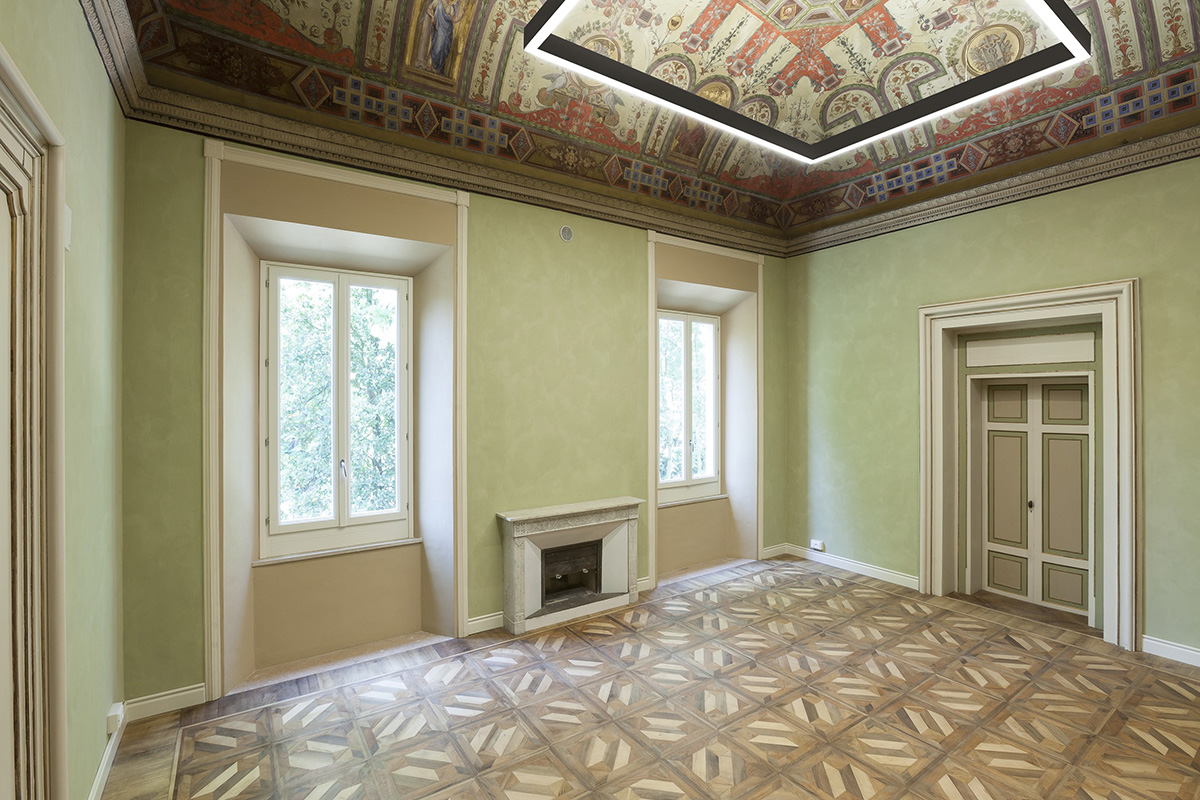
Gulinelli Palace in Ferrara, GBC Historic Building gold certified. Image © GBCItalia
Antonello Magliozzi: What is the maturity of the Italian designer with respect to the themes of environmental sustainability? A sensibility has certainly grown, but are the skills that Italian universities provide today sufficient?
Marco Mari: When Italians go abroad, they are quite welcome in terms of research. There is certainly a demand for Italian brains abroad. Already this observation gives you an answer. To answer the question, I always apply a criterion of measurement. That's why I'm answering the question by asking myself another question: how many buildings do we certify as LEED in Italy? What is the average performance of projects and buildings in Italy? Are we capable or incapable? In Italy the percentage of LEED Platinum buildings out of the number of certified buildings is the highest in the world. I was present at the inauguration of the first Platinum certified project in Italy: Energy Park in Vimercate. For that project GBCI checked several times that it was indeed Platinum. It seemed impossible that such a result had been achieved in Italy. The reality is that our project quality is no less. In fact, we have a discreet educational quality, a widespread cultural quality and companies that are able to work well. The result: platinum! There is another important variable, which applies not only to Italy but to the whole world and which I could define: anti-archistar. Not because I don't appreciate important and brilliant architects like Renzo Piano, but because I think we need not only models and masters, but also methods. If we don't have methods, everyone else will not grow, especially young people. The other specificity of Italy is that our country has an overabundance of mandatory environmental regulations compared to any other country in the world. In the United States, it is not by chance that LEED gives you a score if you do the remediation because there it is not mandatory. Here in Italy, on the other hand, yes! So we have a fair quality of design, a fair quality of implementation, and an overabundance of mandatory rules, but we have a problem in reporting results. So if we can accept and pursue the reporting rules of international protocols, it turns out that we are the vatussi.
Antonello Magliozzi: But are there any limits in the "Italian" approach?
Marco Mari: When we check the performance of buildings with the commissioning activities, we verify that the building responds correctly to the design requirements. The problem at that point is not the construction but how the building is guided. The maintenance technician does not know how to balance the system, the property forgets to do periodic maintenance and thus the significance of an important job such as that of a green designed and built building is lost. This shows that the culture must change in those who manage more than in those who design. Thinking of managing a building in single pieces is even worse. I don't buy a car by the kilo, why should I buy a house by the meter? Today with 110% we incentivize the envelope, but then we leave the fossil gas thermal power plant? It is necessary to change the approach: it is necessary to use environmental energy protocols. A less insulated building, but more balanced overall, can also work.
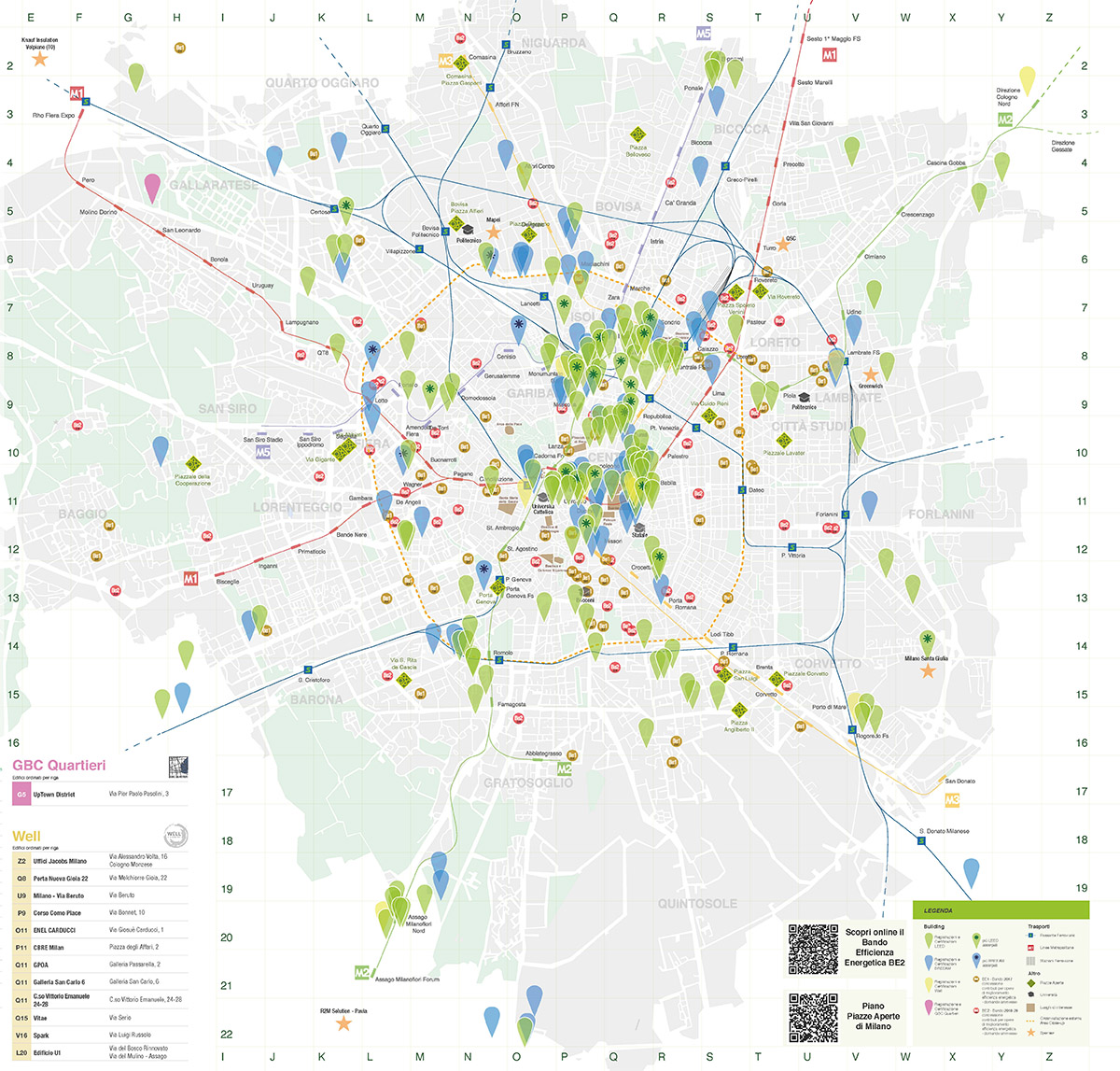
Milano Green Buildings map. Image © GBCItalia
Antonello Magliozzi: In Europe there is talk of moving from a taxation of labor to a taxation of CO2. Is this something that will become a reality soon?
Marco Mari: It's already a reality. The European polluter-pays principle is already in place. The subject of "mission trading" is already very clear and structured, there is nothing to invent. What scares me is that we only talk about near zero and CO2 and we don't talk at the same time about health and healthiness, or about water consumption. The approach should be changed. Once the absolutely necessary areas to be measured have been identified, they should be transferred to the individual supply chains. Agribusiness has its own parameters, and construction has its own parameters, which are different! We're still talking about individual drivers. It means that: once again there is a lack of holistic design thinking and we treat the topic with a one-dimensional approach.
Antonello Magliozzi: One last question. How to cope with an ever-changing regulatory landscape, with so many items and criteria, with so many needs ranging from projects to reporting? How do you think we can help speed up the process of applying the holistic rules of environmental energy policies?
Marco Mari: To answer your question, I'll tell you what a start-up made by "emigrant pizza makers" is doing in this regard. It's called On greening, and it was founded by my partner Alfonso Senatore, a professor at London South University. In addressing the issues of environmental energy protocols, he understood the importance of two issues: the choice of materials and products and the reporting of all their characteristics. This is why his startup tells the story of projects, people and products. (the three p's). What is the goal? To narrate, inspire and make it easy to apply sustainable building processes. Projects that apply the principles of sustainability protocols, i.e. already certified, can be featured for free. These are geo-referenced, i.e. associated with specific climatic conditions. It includes data on the environmental characteristics of materials and products according to the principles and compliance of the different protocols. Ongreening acts as a meta-translator. It analyzes the protocols, pulls out the features and allows you to do the opposite: it highlights everything that is useful for a specific purpose. Since the problem is not choosing the product, but being able to have all the specific certifications according to the requirements of the protocols, Ongreening helps both get materials into the pipeline and saves time in the reporting phase. It helps avoid the possible loss of points due to reporting deficiencies.
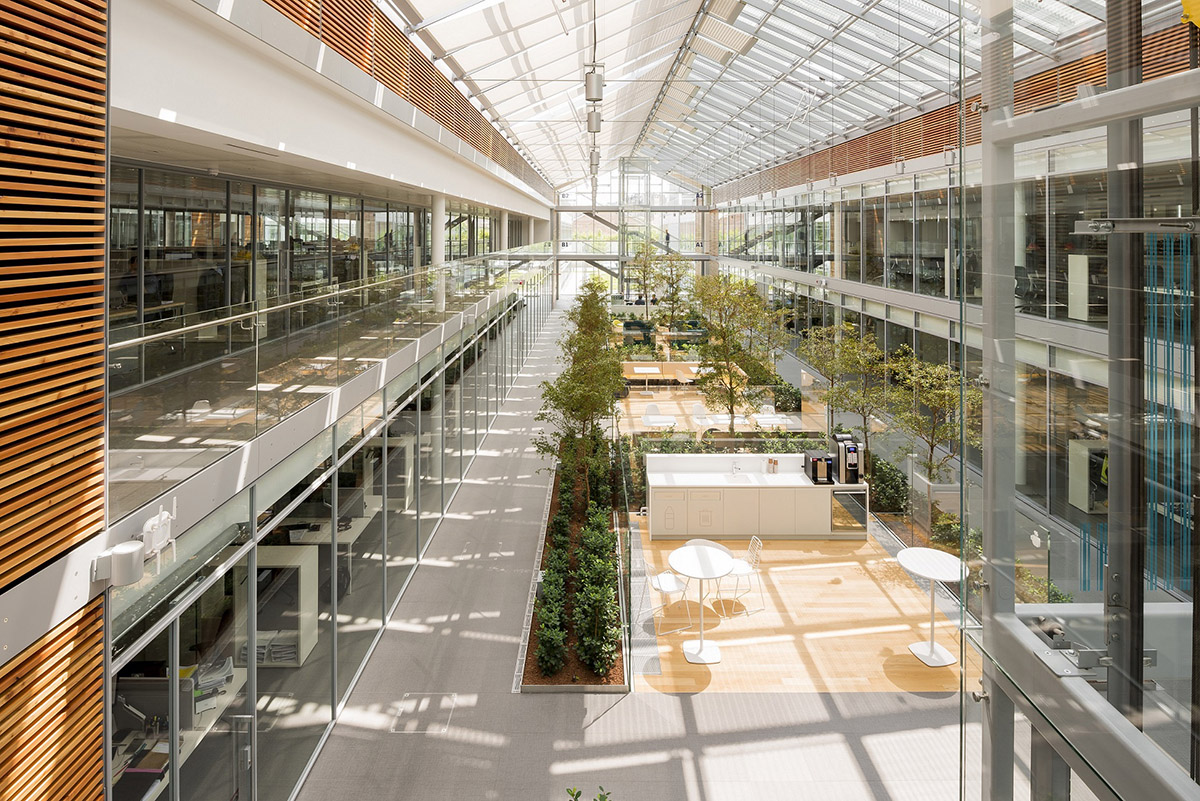
Prysmian New Headquarter, Milan. LEED Platinum certified. Image © GBCItalia
Top image courtesy of GBC Italia
